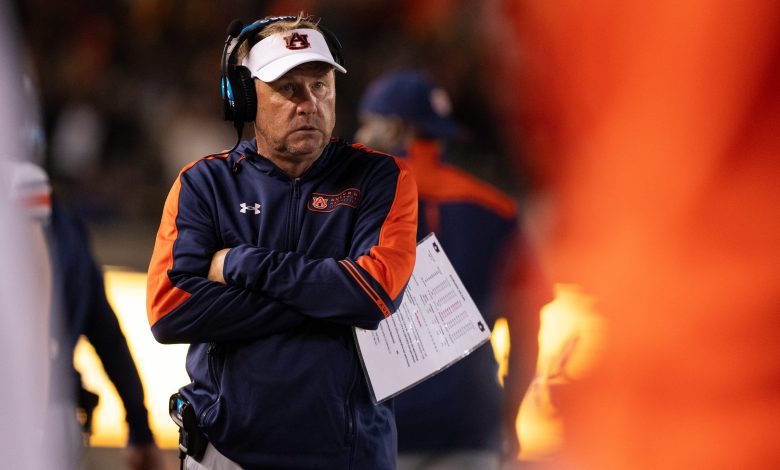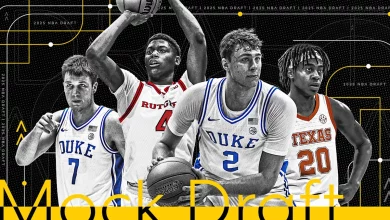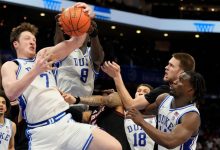Auburn and Coach Freeze are evaluating roster retention and talent acquisition strategies as the new revenue-sharing model starts, impacting team composition, recruitment efforts, and overall program stability.

The landscape of college football is rapidly evolving, driven by financial shifts, conference realignments, and new revenue-sharing models. Auburn University, a storied football program in the Southeastern Conference (SEC), finds itself navigating these changes under the leadership of Head Coach Hugh Freeze. As the sport transitions into an era where revenue sharing begins to influence team-building strategies, Auburn and Coach Freeze are meticulously evaluating their approach to roster retention and talent acquisition. These strategies are crucial for maintaining competitiveness, ensuring team stability, and positioning the program for sustained success. This comprehensive analysis explores the multifaceted implications of these developments, including financial considerations, recruitment dynamics, roster stability, and long-term strategic planning.
The Changing Financial Landscape of College Football
College football has transformed from a primarily athletic endeavor into a lucrative enterprise. With television contracts, sponsorship deals, merchandise sales, and ticket revenue, programs like Auburn generate significant income. Recently, the advent of revenue-sharing models—where conference revenues are distributed among member schools—has further reshaped financial priorities.
In particular, the SEC’s revenue-sharing approach aims to promote competitive balance and financial stability across member institutions. However, this shift also influences how programs allocate resources toward recruiting, facilities, and player development. For Auburn, the revenue-sharing model underscores the importance of strategic financial management to sustain competitive teams, attract top talent, and retain key players.
Roster Retention: Challenges and Strategies
Roster retention is a critical component of team stability. In college football, player turnover is high due to graduation, transfers, injuries, and the evolving NCAA transfer portal landscape. Retaining key players ensures continuity, team chemistry, and the preservation of recruiting investments.
Key challenges in roster retention include:
Transfer Portal Dynamics: The transfer portal has become a pivotal aspect of roster management. Players seeking more playing time, a different coaching environment, or academic considerations may transfer, often impacting team depth and performance.
NCAA Transfer Regulations: Recent rule changes allowing immediate eligibility for transfer students have increased mobility but also complicate retention strategies.
Recruitment Competition: Top programs compete fiercely to retain their best players, especially as other schools target high-performers through NIL (Name, Image, Likeness) opportunities.
Strategies Auburn and Coach Freeze might consider include:
Enhanced Player Development: Fostering an environment where players feel valued and see clear pathways to success can reduce transfers.
Academic Support and Player Well-being: Providing comprehensive support can increase player satisfaction and loyalty.
NIL Engagement: Facilitating NIL opportunities within NCAA guidelines can incentivize players to stay committed to Auburn.
Leadership and Culture Building: Cultivating a strong team culture rooted in trust, accountability, and shared goals encourages players to remain committed.
Talent Acquisition in the New Revenue-Sharing Era
Talent acquisition remains the backbone of a successful football program. With the new revenue-sharing model, Auburn has both opportunities and challenges in attracting the nation’s top high school prospects and transfers.
Opportunities include:
Increased Financial Stability: More predictable revenue streams allow for better investment in recruiting infrastructure, facilities, and scouting.
Enhanced Facilities and Support Staff: Improvements in infrastructure make Auburn more appealing to recruits.
NIL Partnerships: Strong NIL programs can be leveraged to attract players seeking both competitive success and NIL opportunities.
Challenges encompass:
Conference Competition: SEC schools like Georgia, Alabama, and LSU continue to dominate recruiting rankings, intensifying the competition for top-tier talent.
Balancing Recruitment and Roster Management: Prioritizing recruits to fill specific positional needs while maintaining roster balance is complex.
Transfer Market Dynamics: As transfers become more prevalent, Auburn must develop targeted strategies to identify and secure transfers that complement the team’s needs.
Strategic approaches include:
Data-Driven Recruitment: Utilizing analytics to identify high-potential prospects and fit within the team’s system.
Relationship Building: Establishing strong relationships with high school coaches and transfer portals to facilitate recruiting pipelines.
NIL and Branding: Developing a compelling brand and NIL partnerships to appeal to recruits’ aspirations beyond the field.
Impact of Revenue Sharing on Team Composition
The redistribution of revenue among SEC schools influences team composition strategies significantly:
Resource Allocation: Schools with increased revenue can invest more in recruiting, facilities, and player development, giving them a competitive edge.
Roster Depth and Quality: Auburn’s ability to retain and acquire players directly correlates with financial investment, impacting depth at key positions and overall team quality.
Player Compensation and NIL: Revenue-sharing models support NIL initiatives, which are now integral to recruiting and retaining top talent.
Coach Freeze’s Role and Strategic Vision
Hugh Freeze, known for his offensive acumen and recruiting prowess, is pivotal in guiding Auburn’s roster and talent strategy amid these financial shifts. His approach likely emphasizes:
Player Development Pipelines: Building a culture that develops players into NFL-caliber talent.
Targeted Recruiting: Focusing on high-impact recruits who fit the team’s strategic vision.
Transfer Portal Utilization: Identifying immediate-impact transfers to fill gaps and elevate team competitiveness.
Building a Sustainable Culture: Ensuring that team culture aligns with long-term stability and success, which in turn attracts recruits and retains players.
Long-Term Stability and Program Sustainability
Sustained success in college football requires balancing immediate competitiveness with long-term stability. Auburn’s strategy must encompass:
Financial Planning: Leveraging revenue-sharing for sustained investment in facilities, support staff, and NIL programs.
Recruiting Cohesion: Building a consistent pipeline of high school recruits and transfers to maintain roster talent.
Player Well-being: Prioritizing academic success, health, and personal development to foster loyalty.
Adapting to NCAA and Conference Policies: Remaining agile amid evolving rules around transfers, NIL, and eligibility.
Broader Implications and Future Outlook
The ongoing financial developments and strategic adjustments at Auburn mirror broader trends across college football:
Increased Competitiveness: Revenue-sharing models aim to level the playing field but may also intensify recruitment battles.
Player Empowerment: NIL and transfer opportunities give players more leverage, influencing roster stability.
Institutional Investment: Schools recognize that investing in talent acquisition and retention directly impacts revenue and national competitiveness.
Looking ahead, Auburn’s success will depend on how effectively it navigates these complexities, leveraging financial stability to build a resilient, competitive roster. Coach Freeze’s leadership and strategic vision will be instrumental in balancing immediate needs with long-term sustainability.
As Auburn University and Coach Hugh Freeze evaluate their roster retention and talent acquisition strategies amid the inception of a new revenue-sharing model, they stand at a crossroads of opportunity and challenge. Financial stability provides the means to invest in facilities, NIL initiatives, and recruitment, but also demands strategic planning to retain key players and attract top talent. Roster stability is essential for sustained success, requiring efforts that foster player loyalty, support, and development. Meanwhile, the evolving landscape of college football—marked by transfer portal dynamics, NIL opportunities, and conference revenue sharing—necessitates innovative and adaptable approaches. Ultimately, Auburn’s ability to effectively navigate these changes will determine its future competitiveness and stability in the fiercely contested world of college football.









